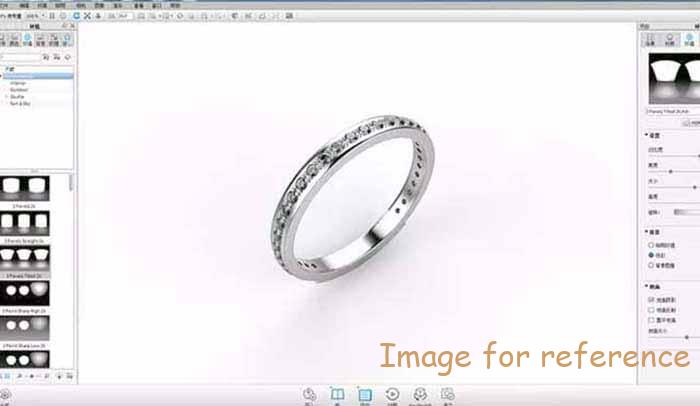宝石の分類では, べっ甲は有機宝石のカテゴリーに含まれます. 有機宝石として, タイマイの上部の甲羅または甲羅を指します。. タイマイは熱帯および亜熱帯の海域に生息するウミガメの一種です。, 体重は多くの場合50〜100kgです.
タイマイの上甲羅と下甲羅の亀の甲羅は、それぞれ美しい模様があり、屋根板で覆われた三列の亀の甲羅で構成されています。. がある 5 中段には亀の甲羅と、 4 両側2列の亀の甲羅. 各シェルの重さは約250gです.
べっ甲は不定形です, ほとんどが黄褐色の模様, クチンと骨で構成されている; 油っぽい光沢からワックス状の光沢まであります, 半透明からわずかに透明で不均一な割れ目; 硝酸によって侵食される可能性があります, ただし塩酸とは反応しない; 黄色または青白色の蛍光; カットと熱可塑性プラスチック.
べっ甲は幅広い用途に使えます: ジュエリーに加えて, ギターのピックを作るのにも使えます, バイオリン弦のナット, 靴のバックル, ブラシハンドル, ナイフのハンドル, ミラーフレーム, 等. 工業用のコーマの櫛歯として使用されたり、医療に使用されたりします。. ボード削りなどに.
べっ甲ジュエリーの種類は以下の通りです。:
(1) ジュエリー: 無地 (つまり裸の体) リング, ブレスレット, イヤリング, 胸のペンダント, 等.
(2) 帽子のカテゴリー: ヘアピン, ヘアピン, 亀の甲羅 (コンボ, すのこ).
(3) 実用工芸: メガネフレーム, 扇子, 等.
(4) 衣類: ネクタイピン, 服のボタン, 等,
べっ甲模造の種類は以下の通りです。:
(1) プレスべっ甲: べっ甲の破片を加熱して接着します。.
(2) 分割べっ甲: べっ甲の薄い部分がプラスチックのベースに接着されています, またはa “3枚合板” メソッドは偽物として使用されます, つまり, 2 つの非常に薄い本物のべっ甲の部分が、底部または表面から同系色のプラスチックに接着されています。, それぞれ. 厚くしてください.
(3) プラスチック模造品: のような製品 “カゼインプラスチック”, “安全なセルロイド”, “ベークライトセルロイド” べっ甲を模倣するために使用される多色のプラスチック.
OEM/ODMジュエリーメーカーのデザインカスタム独自のジュエリー
始めましょう : mo@kingjy.com
広州ジンジーカスタム卸売リングネックレスブレスレットイヤリングスターリングシルバーに焦点を当てる 925 ジュエリー,スターリングシルバーゴールドは18Kでメッキされています,14k,24Kイエローゴールド,ホワイトゴールドとローズゴールド。それはカスタムスターリングシルバージュエリーさまざまなデザインをカスタムすることができます,顧客の要件に従ってレーザー彫刻によるロゴブランドまたはその他の言葉.
私たちの毎月の生産能力は順調です 50,000 ピースブレスレットネックレスイヤリングリングジュエリー。スーパーマーケットとのパートナーシップに参加する,ジュエリーチェーンショップ,アウトレットストア,ジュエリー卸売業者,トレーダーとジュエリーブランド会社,専門家はカスタマイズされたジュエリーを作成し、高品質の大量生産を提供します 925 スターリングシルバージュエリーサービス.
 カスタムメイドのシルバーイヤリングジュエリーメーカー
カスタムメイドのシルバーイヤリングジュエリーメーカー
ジンジーカスタムメイドのシルバーイヤリングジュエリーメーカー 生産プロセス
ジンジージュエリーの質の高い保証の理由
1. オリジナルのデザイン
デザインのアイデアやサンプルが変更されたときに始まります ,あなたの要求としてスケッチでオリジナルのデザインを開始します. カスタムネックレスメーカー
 カスタムメイドのシルバーイヤリングジュエリーメーカー
カスタムメイドのシルバーイヤリングジュエリーメーカー
2.3D金型の作成
これが単純なスケッチであろうと完全なプロトタイプであろうと, 私たちは経験豊富で成熟したデザインチームです。.カスタム 925 シルバーブレスレット.
 カスタムメイドのシルバーイヤリングジュエリーメーカー
カスタムメイドのシルバーイヤリングジュエリーメーカー
3.型の作成 ( メタルマスター)
私たちはCNC加工機の彫刻ジュエリーモデルを使用して、私たちの宝石商品を確保します 100% 高品質のスターリングシルバージュエリーは高級ジュエリーの表面と同じ滑らかで失われた石と同じ .カスタムイヤリングスターリングシルバーメーカー
 カスタムメイドのシルバーイヤリングジュエリーメーカー
カスタムメイドのシルバーイヤリングジュエリーメーカー
4.鋳造
注入ワックス型は石膏型になります ,高温暖房後、宝石の金属製品ベースを手に入れました. カスタムメイドのリングシルバージュエリー
 カスタムメイドのシルバーイヤリングジュエリーメーカー
カスタムメイドのシルバーイヤリングジュエリーメーカー
5. 成形 & 研磨
ジュエリー商品のモデリングがより美しい ,表面滑らか. カスタムメイドのシルバージュエリーメーカー
 カスタムメイドのシルバーイヤリングジュエリーメーカー
カスタムメイドのシルバーイヤリングジュエリーメーカー
6. ハンド設定宝石
私たちは、日本から輸入された5A cz石のために設定されたマイクロインセルマシンを使用します ,可能です 99% 失われた石ワックス設定技術はありません . カスタムメイドの男性シルバージュエリー
 カスタムメイドのシルバーイヤリングジュエリーメーカー
カスタムメイドのシルバーイヤリングジュエリーメーカー
7. メッキ
私たちはすべての人のために2回のメッキをします 925 スターリングシルバージュエリー ,最初にベースで厚い銀メッキをします ,ダブルポッシュは表面を滑らかに確認し、本物の金メッキを続けてください ,厚さまで 3 マイクロンは、1年間続くことを保証します ,私たちはそれを頂点と呼びます .
 カスタムメイドのシルバーイヤリングジュエリーメーカー
カスタムメイドのシルバーイヤリングジュエリーメーカー
8. 完璧なQCプロセス
品質チェックは、生産ライン全体で最も重要なプロセスです。各プロセスごとに質の高いチェック制御を行う10エンジニアのチームがあります .
失われた石-1、私たちはプロのスチールニードルを使用して石を一つずつ叩きます ,0.2の脱落はないことを確認してください。 3 石をチェックするメートルは落ちません .
メッキ- 1,顧客は、メッキの厚さに関する機械テストからレポートを取得できます。 ,金属表面を5分間手動でこすります ,コートの品質が良いことを確認してください . カスタム卸売スターリングシルバー
 カスタムメイドのシルバーイヤリングジュエリーメーカー
カスタムメイドのシルバーイヤリングジュエリーメーカー
9. パッケージング & 配送
独立したパッケージ ,または顧客の要求に応じて;DHLによるエクスプレス配信 ,UPS,TT
 カスタムメイドのシルバーイヤリングジュエリーメーカー
カスタムメイドのシルバーイヤリングジュエリーメーカー
ジンジーカスタムメイドのシルバーイヤリングジュエリーメーカー 925 スターリングシルバーメーカー アドバンテージ
1:20-年シニアハイエンド 925 スターリングシルバーカスタム卸売ジュエリーMaunfacturer
2:数千のファッションジュエリーカスタマイズされたプロダクションエクスペリエンス ,毎月の生産能力 100000 作品
3: 絶妙な仕上がり ,Surfface滑らか.
4:効率的な生産,7-日のサンプル時間 ,30-1日の大量生産時間
5:高品質の製品,色は変わりません, 石を落とさないでください, 人間以外の理由で製品品質の質問がある場合, 保証されています 3-6 修理のための月.
 カスタムメイドのシルバーイヤリングジュエリーメーカー
カスタムメイドのシルバーイヤリングジュエリーメーカー
 カスタムメイドのシルバーイヤリングジュエリーメーカー
カスタムメイドのシルバーイヤリングジュエリーメーカー
過去に 20 年, ジンジージュエリーは、完璧を追求し、改善するという目的に従っています 925 シルバージュエリー Technology.私たちの設計チームは、スキルの学習と改善を続けています ,ファッショナブルなデザイン, フェミニンのためのロマンチックなアクセサリー。絶妙なデザインプロセスと優れた品質に頼る, ジンジージュエリーは、国内外でチェーンブランドの馴染みのある認識を獲得しました.
機会:モダンジュエリー製造 パーティーのための卸売女性のジュエリーの習慣と女性のための毎日のトレンディなジュエリーリング
 カスタムメイドのシルバーイヤリングジュエリーメーカー
カスタムメイドのシルバーイヤリングジュエリーメーカー
ジュエリーカスタムメイドのシルバーイヤリングジュエリーメーカーの品質保証 :
あなたの宝石のデザインと商品は出荷前に写真を撮る必要があります。問題があるかどうかを注文する .
あなたが商品を手に入れたら、あなたがカスタムジュエルデザインや大量注文に問題があるものは何でも ,私たちと連絡してください (mo@kingjy.com) ,品質の問題がある場合は払い戻しを受ける可能性があります ,私たちと一緒にビジネスをすることは安全です .
OEM/ODMジュエリーメーカーのデザインカスタム独自のジュエリー
始めましょう : mo@kingjy.com
広州ジンジーカスタム卸売リングネックレスブレスレットイヤリングスターリングシルバーに焦点を当てる 925 ジュエリー,スターリングシルバーゴールドは18Kでメッキされています,14k,24Kイエローゴールド,ホワイトゴールドとローズゴールド。それはカスタムスターリングシルバージュエリーさまざまなデザインをカスタムすることができます,顧客の要件に従ってレーザー彫刻によるロゴブランドまたはその他の言葉.
私たちの毎月の生産能力は順調です 50,000 ピースブレスレットネックレスイヤリングリングジュエリー。スーパーマーケットとのパートナーシップに参加する,ジュエリーチェーンショップ,アウトレットストア,ジュエリー卸売業者,トレーダーとジュエリーブランド会社,専門家はカスタマイズされたジュエリーを作成し、高品質の大量生産を提供します 925 スターリングシルバージュエリーサービス.
 カスタムメイドのシルバーイヤリングジュエリーメーカー
カスタムメイドのシルバーイヤリングジュエリーメーカー
ジンジーカスタムメイドのシルバーイヤリングジュエリーメーカー 生産プロセス
ジンジージュエリーの質の高い保証の理由
1. オリジナルのデザイン
デザインのアイデアやサンプルが変更されたときに始まります ,あなたの要求としてスケッチでオリジナルのデザインを開始します. カスタムネックレスメーカー
 カスタムメイドのシルバーイヤリングジュエリーメーカー
カスタムメイドのシルバーイヤリングジュエリーメーカー
2.3D金型の作成
これが単純なスケッチであろうと完全なプロトタイプであろうと, 私たちは経験豊富で成熟したデザインチームです。.カスタム 925 シルバーブレスレット.
 カスタムメイドのシルバーイヤリングジュエリーメーカー
カスタムメイドのシルバーイヤリングジュエリーメーカー
3.型の作成 ( メタルマスター)
私たちはCNC加工機の彫刻ジュエリーモデルを使用して、私たちの宝石商品を確保します 100% 高品質のスターリングシルバージュエリーは高級ジュエリーの表面と同じ滑らかで失われた石と同じ .カスタムイヤリングスターリングシルバーメーカー
 カスタムメイドのシルバーイヤリングジュエリーメーカー
カスタムメイドのシルバーイヤリングジュエリーメーカー
4.鋳造
注入ワックス型は石膏型になります ,高温暖房後、宝石の金属製品ベースを手に入れました. カスタムメイドのリングシルバージュエリー
 カスタムメイドのシルバーイヤリングジュエリーメーカー
カスタムメイドのシルバーイヤリングジュエリーメーカー
5. 成形 & 研磨
ジュエリー商品のモデリングがより美しい ,表面滑らか. カスタムメイドのシルバージュエリーメーカー
 カスタムメイドのシルバーイヤリングジュエリーメーカー
カスタムメイドのシルバーイヤリングジュエリーメーカー
6. ハンド設定宝石
私たちは、日本から輸入された5A cz石のために設定されたマイクロインセルマシンを使用します ,可能です 99% 失われた石ワックス設定技術はありません . カスタムメイドの男性シルバージュエリー
 カスタムメイドのシルバーイヤリングジュエリーメーカー
カスタムメイドのシルバーイヤリングジュエリーメーカー
7. メッキ
私たちはすべての人のために2回のメッキをします 925 スターリングシルバージュエリー ,最初にベースで厚い銀メッキをします ,ダブルポッシュは表面を滑らかに確認し、本物の金メッキを続けてください ,厚さまで 3 マイクロンは、1年間続くことを保証します ,私たちはそれを頂点と呼びます .
 カスタムメイドのシルバーイヤリングジュエリーメーカー
カスタムメイドのシルバーイヤリングジュエリーメーカー
8. 完璧なQCプロセス
品質チェックは、生産ライン全体で最も重要なプロセスです。各プロセスごとに質の高いチェック制御を行う10エンジニアのチームがあります .
いいえ













